Where to begin? An old wife’s tale is that magpies’ nests are renowned for having a mismatched collection of things that have thrilled those beady little eyes, sometimes things of great value and interest, and others that are brightly coloured but instantly forgettable. And magpies reputedly delighted in rearranging their treasures. This was my lasting impression of East Ruston Old Vicarage.
At East Ruston Alan Gray and Graham Robeson have amassed an amazing collection of rare and tender plants many of which were grown from seed, and have created a garden with several unique features, but many other garden areas are lost in the melee.
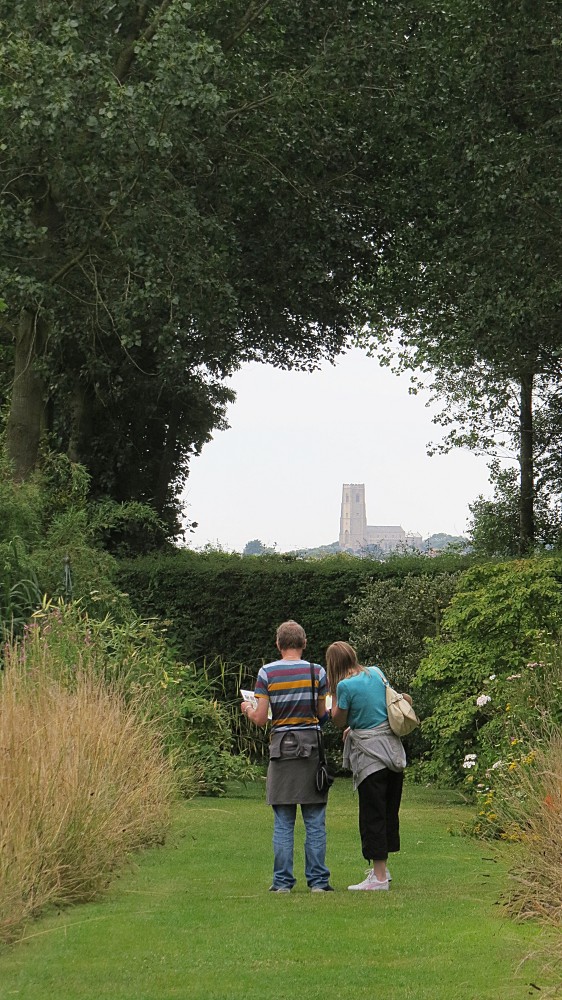
Happisburgh Church
Change is the only constant in this garden and Alan and Graham have a restless creative energy that I find bewildering. New gardens are being added all the time, and what Alan called ‘a dog’s dinner’ a few years ago morphed into a tropical border and currently is the Red and Purple Border. I sense that as they focus their energies on their new projects the standard of pruning, weeding and maintenance slips in their least favourite garden areas.
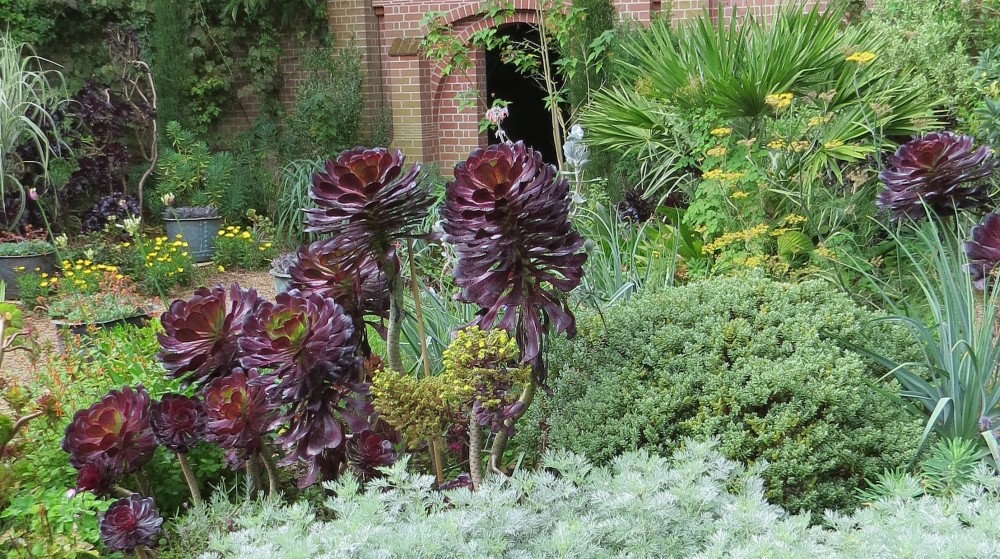
This is an unlikely place for a large fine garden, set in the middle of a flat landscape of arable prairie monoculture, and only one and a half miles from the sea. However providing those deeply chilling east winds that blow all the way from Russia can be ameliorated, its proximity to the sea gives it a mild microclimate. Hence the sheltering hedges and belts of Monterey pine with the delightfully framed glimpse of Happisburgh church.
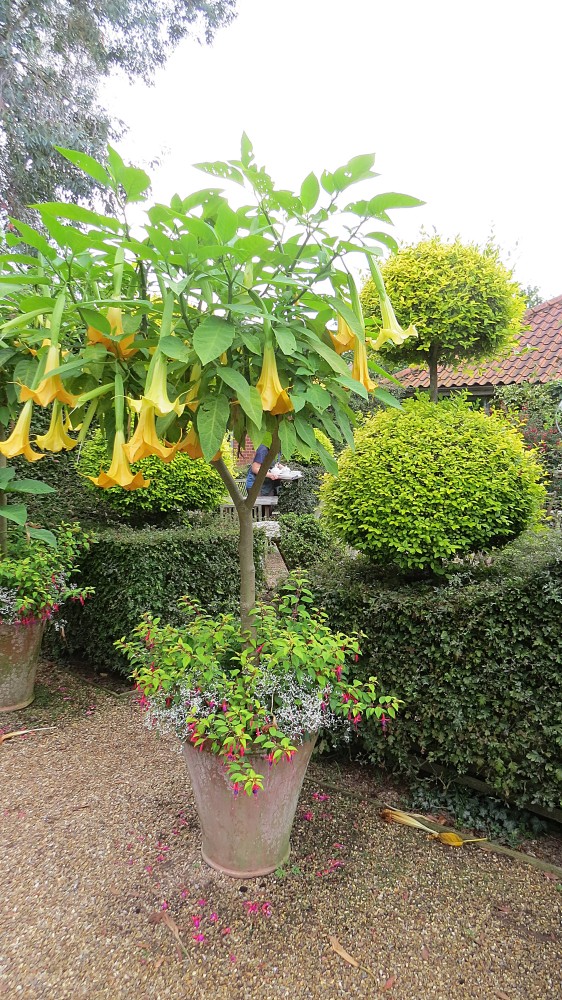
The light sandy loam with a neutral pH means that they can grow a wide range of annuals, perennials and shrubs and they take great delight in breaking all the rules and pushing the boundaries. I admire their huge sense of fun and such a brave high-risk planting strategy means that unusual Taiwanese rice-paper plants, colossal Tasmanian tree ferns, Arizonan agaves, African aloes and giant brugmansias all jostle for my attention.
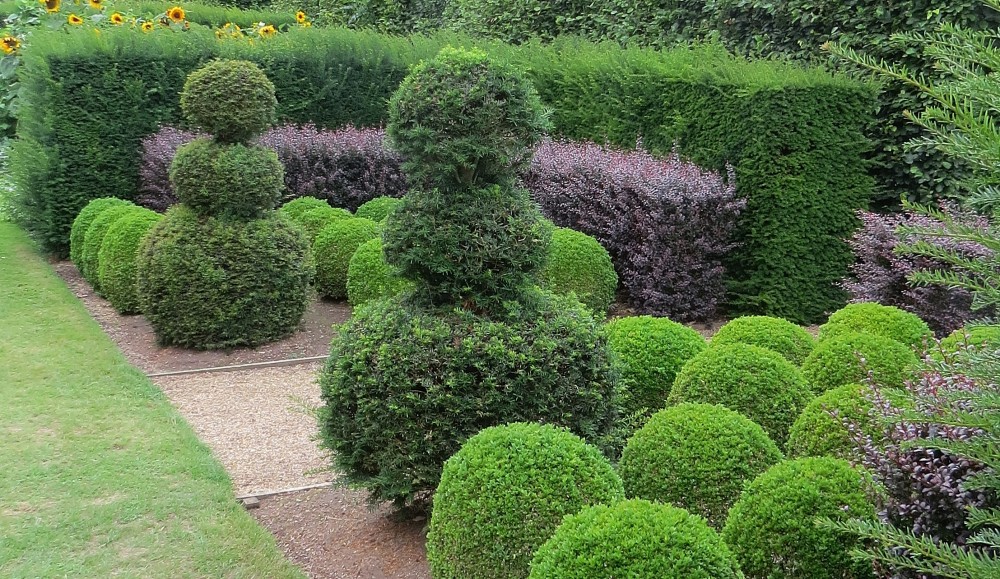
With two or three notable exceptions, I find the garden comes unravelled on the layout and design of its numerous rooms. There is a lack of consistency and like children in a sweetshop, I sense they see something and want it in their own garden. However, this is not a garden without original features, of which I think one of the most successful, iconic and unique is the Desert Wash.
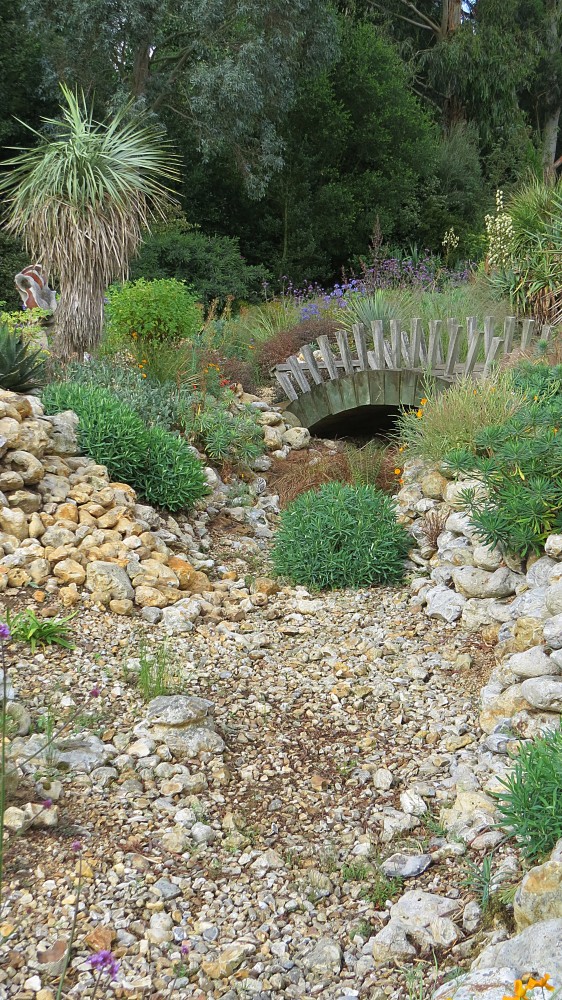
Desert Wash 1
Norfolk has a lowish rainfall, but to simulate desert conditions soil was removed to a depth of a metre, and replaced with layers of free-draining gravel. Flints of varying sizes were used to give the appearance of a dried-up river bed, and aloes, agaves, yuccas were planted, with Californian poppies to give summer interest. The spiky bleached out bridge forms the centrepiece of this fascinating garden.
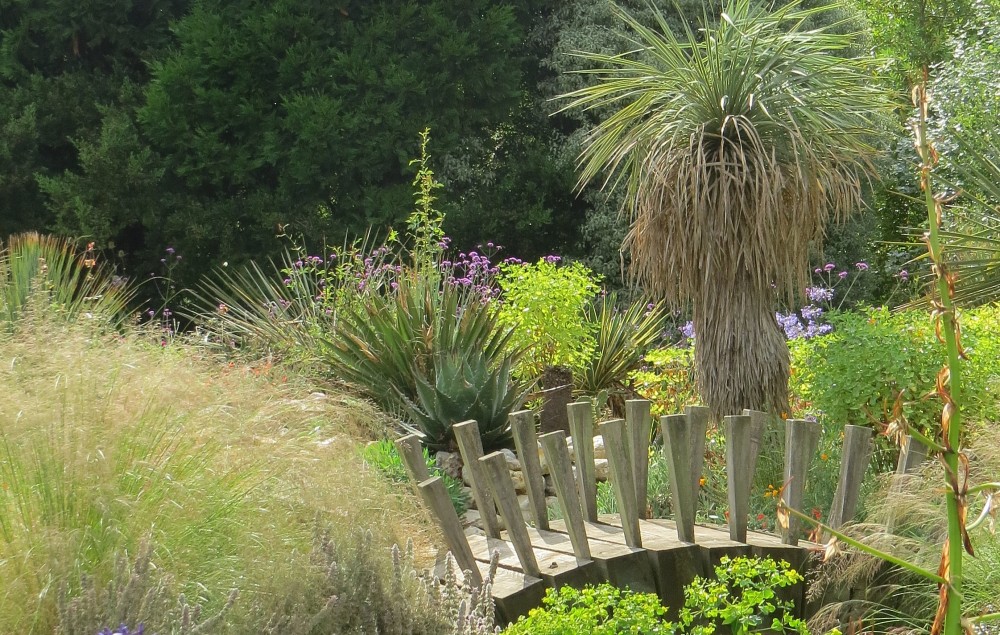
Desert Wash 2
But probably my favourite area is the neighbouring Cornfield. For over 20 years, Alan and Graham have been perfecting the balance of flowering annuals and with East Ruston Church in the background this is one of the garden’s most gloriously memorable sights.
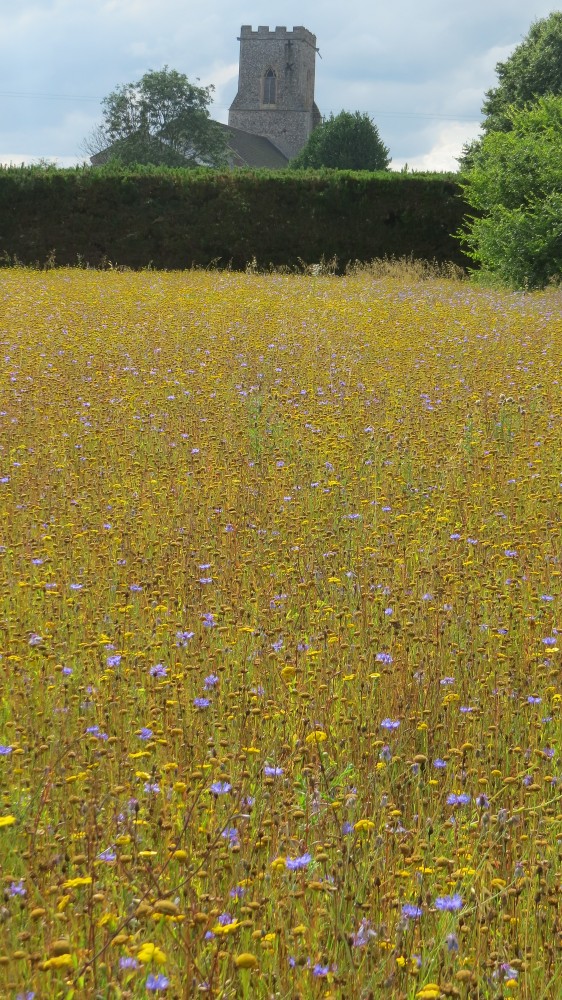
The Cornfield
Another area that works incredibly well is East Ruston’s Tree Fern Garden because the size, layout and great number of tree ferns gives it the appearance of a fan-vaulted gothic chapel. It is a rare still place in this exciting over-the-top collection of gardens where at every turn there is something new to grab your attention. Admire East Ruston as I do, I must say that I quickly go into visual over-load.
So what of the future? A few years ago Alan and Graham purchased a further 100 acres, and the temptation must be if they have the resources and can staff the garden adequately, to go on experimenting and expanding.
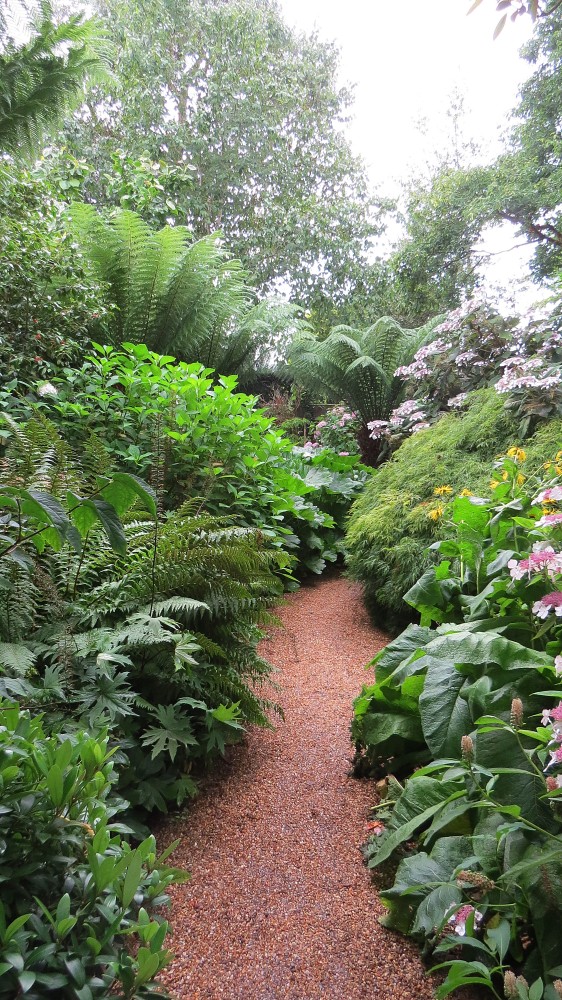
Tree Fern Garden
I would like to see them take an overview of what they already achieved, and simplify, simplify, simplify. For the last 30 years it has been a garden to watch, but I think the time has come to introduce some consistency, simple low maintenance block planting, and most importantly a large body of water. Why so little use is made of water in the garden? There are two small ponds and two or three stylish modern fountains, but in a garden of 22 rooms covering 32 acres this seems a strange oversight.
Will these two extraordinarily flamboyant characters sort their treasures and abandon those brightly-coloured will o’the wisp things in their remarkable garden? If past performance is anything to go by I think it is highly unlikely, but past performance is not always a guide for the future. I will watch carefully, and have to think long and hard before making the journey to this remote part of North Norfolk again.
Where: East Ruston Old Vicarage, East Ruston, Norwich NR12 9HN
Contact: www.e-ruston-oldvicaragegardens.co.uk
| Setting | 3 | Interest for Children | 4 |
| Concept | 4 | Accessibility | 5 |
| Design Execution | 4 | Cafe | 4 |
| Hard Landscaping | 3 | ||
| Planting | 5 | ||
| Maintenance | 3 | ||
| Garden | 22/30 | Facilities | 13/15 |
